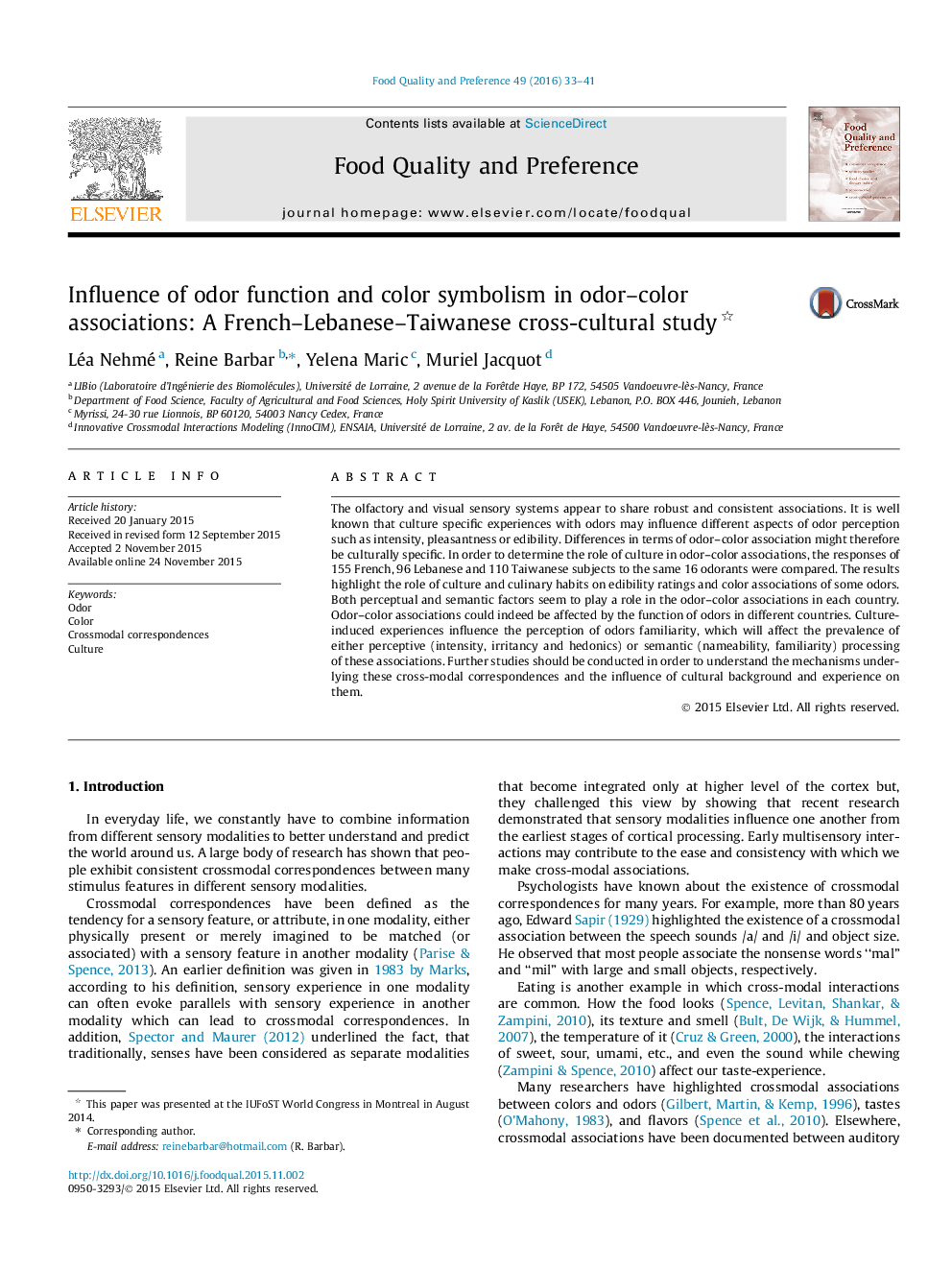| Article ID | Journal | Published Year | Pages | File Type |
|---|---|---|---|---|
| 6261246 | Food Quality and Preference | 2016 | 9 Pages |
â¢Influence of experience on odor-color correspondences was tested in 3 populations.â¢Existence of robust color-odor correspondences were proven among the 3 populations.â¢Culture influence perception of odors familiarity and perceptive or semantic models.â¢Perceptual and semantic factors play a role in the choice of odor-color associations.
The olfactory and visual sensory systems appear to share robust and consistent associations. It is well known that culture specific experiences with odors may influence different aspects of odor perception such as intensity, pleasantness or edibility. Differences in terms of odor-color association might therefore be culturally specific. In order to determine the role of culture in odor-color associations, the responses of 155 French, 96 Lebanese and 110 Taiwanese subjects to the same 16 odorants were compared. The results highlight the role of culture and culinary habits on edibility ratings and color associations of some odors. Both perceptual and semantic factors seem to play a role in the odor-color associations in each country. Odor-color associations could indeed be affected by the function of odors in different countries. Culture-induced experiences influence the perception of odors familiarity, which will affect the prevalence of either perceptive (intensity, irritancy and hedonics) or semantic (nameability, familiarity) processing of these associations. Further studies should be conducted in order to understand the mechanisms underlying these cross-modal correspondences and the influence of cultural background and experience on them.
